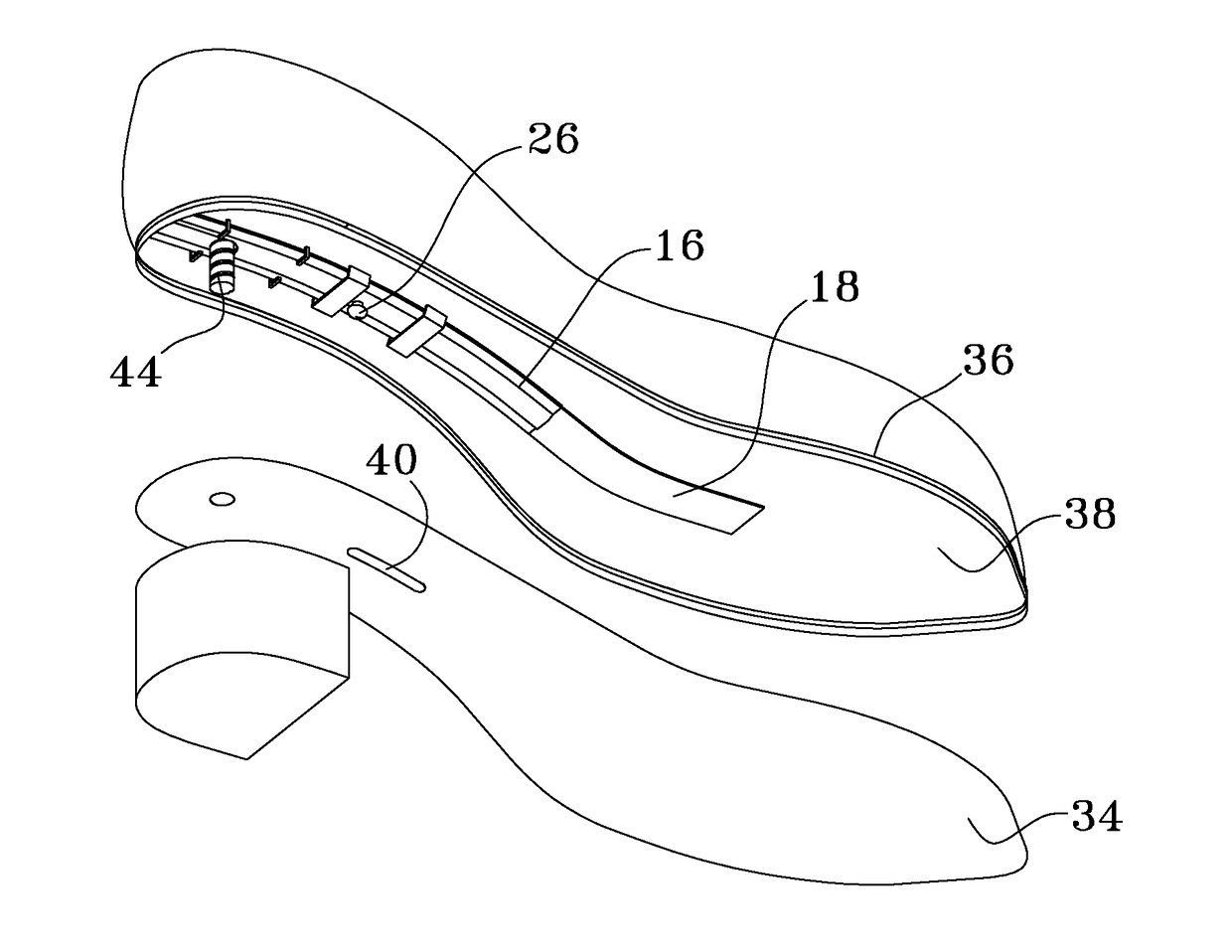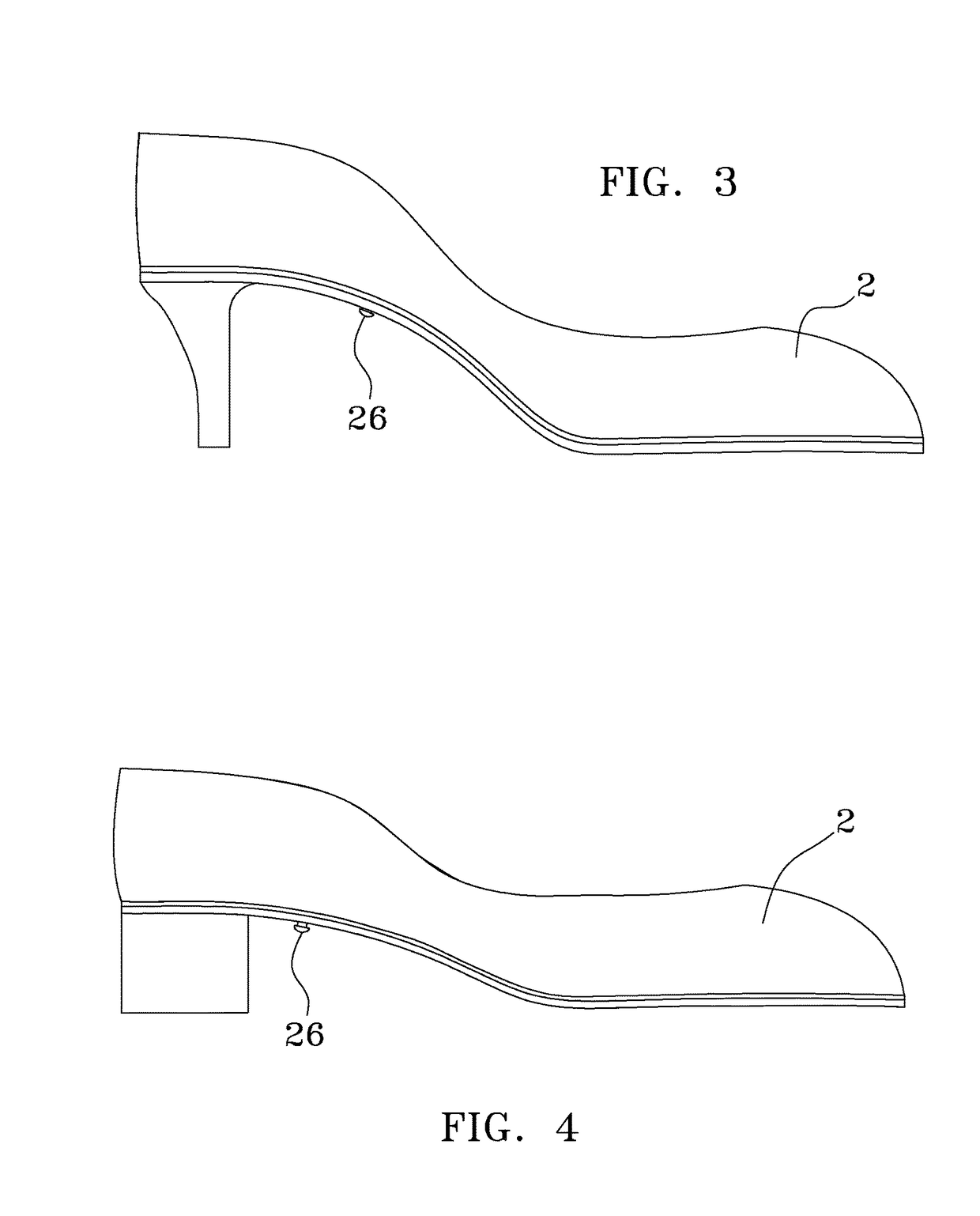Shoe with a high heel to low heel conversion
a conversion technology for shoes and high heels, applied in the field of shoes with high heels to low heels, can solve the problems of plethora of physical problems, wobbling and slipping, and high heels, and achieve the effect of convenient conversion and quick and simple conversion
- Summary
- Abstract
- Description
- Claims
- Application Information
AI Technical Summary
Benefits of technology
Problems solved by technology
Method used
Image
Examples
Embodiment Construction
[0036]When one shifts from walking on low heels to high heels the foot bends at the metatarsophalangeal joints located between the base of the proximal phalanx bones and the head of the metatarsal bones. The plantar fascia is then stretched beneath the tarsal bones. Thus, less of the weight of the person is carried by the calcaneus bone and more of the weight is carried by the metatarsal bones. Like walking on tip toes, this leaves this plantar fascia under tension. Over periods of time, this tension fatigues the foot. For this reason, high heeled shoes generally have a support shank made of a rigid material that runs down the longitudinal centerline of the shoe to transfer some of the load off of the heads of the metatarsal bones and back onto the remainder of the foot's bone structure. The support shank also generally has a slight arc along its length that serves to flex the plantar fascias slightly and reduce the point stress at its center. In normal walking, whether in high heel...
PUM
 Login to View More
Login to View More Abstract
Description
Claims
Application Information
 Login to View More
Login to View More - R&D
- Intellectual Property
- Life Sciences
- Materials
- Tech Scout
- Unparalleled Data Quality
- Higher Quality Content
- 60% Fewer Hallucinations
Browse by: Latest US Patents, China's latest patents, Technical Efficacy Thesaurus, Application Domain, Technology Topic, Popular Technical Reports.
© 2025 PatSnap. All rights reserved.Legal|Privacy policy|Modern Slavery Act Transparency Statement|Sitemap|About US| Contact US: help@patsnap.com



